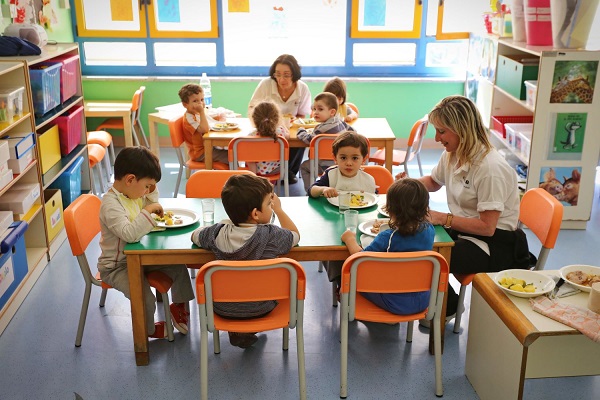Healthy Feeding from the Start for Expectant Families
Share this resource to help explain responsive feeding to expectant families. They can also learn about how it supports healthy eating practices for babies and young children.
 A positive eating environment allows children to develop and maintain healthy relationships with food. It's a space where children feel emotionally supported and learn about food and eating. They receive developmentally appropriate food, have enough time to eat, and get the opportunity to explore a variety of foods that broaden their experiences and enhance their school readiness. Explore these resources to learn how to implement positive eating environments during meals.
A positive eating environment allows children to develop and maintain healthy relationships with food. It's a space where children feel emotionally supported and learn about food and eating. They receive developmentally appropriate food, have enough time to eat, and get the opportunity to explore a variety of foods that broaden their experiences and enhance their school readiness. Explore these resources to learn how to implement positive eating environments during meals.
Share this resource to help explain responsive feeding to expectant families. They can also learn about how it supports healthy eating practices for babies and young children.
Childhood obesity increases the likelihood of adulthood obesity. Explore these tips for creating a positive eating environment and using movement as a learning tool.
This video introduces strategies to create a positive eating environment. Use this information to help staff and families understand that mealtime is not just an eating event. It's a learning opportunity.
Learn important nutrition messages and activities to help young children build a lifetime of healthy eating practices, in this webinar and online course.
Learn the benefits of family style dining and how to support it in an early childhood education program.
Learn why it is important to create a positive eating environment. Find out how doing so supports mealtime behavior and picky eaters. It can also support children who experience food insecurity.
Use this interactive tool to learn about practices programs can use to create a positive eating environment. Find out how to build an eating environment that supports children’s healthy growth and development.
The Positive Eating Environment Self-Assessment for Early Care and Education (ECE) Programs offers a brief, user-friendly way to assess basic mealtime practices. Learn how this assessment can help center-based and family child care programs that serve 3 to 5 year olds. Staff can use this tool to evaluate the availability of healthy nutrition and mealtime environments. It can also be used for staff discussions and policy planning.